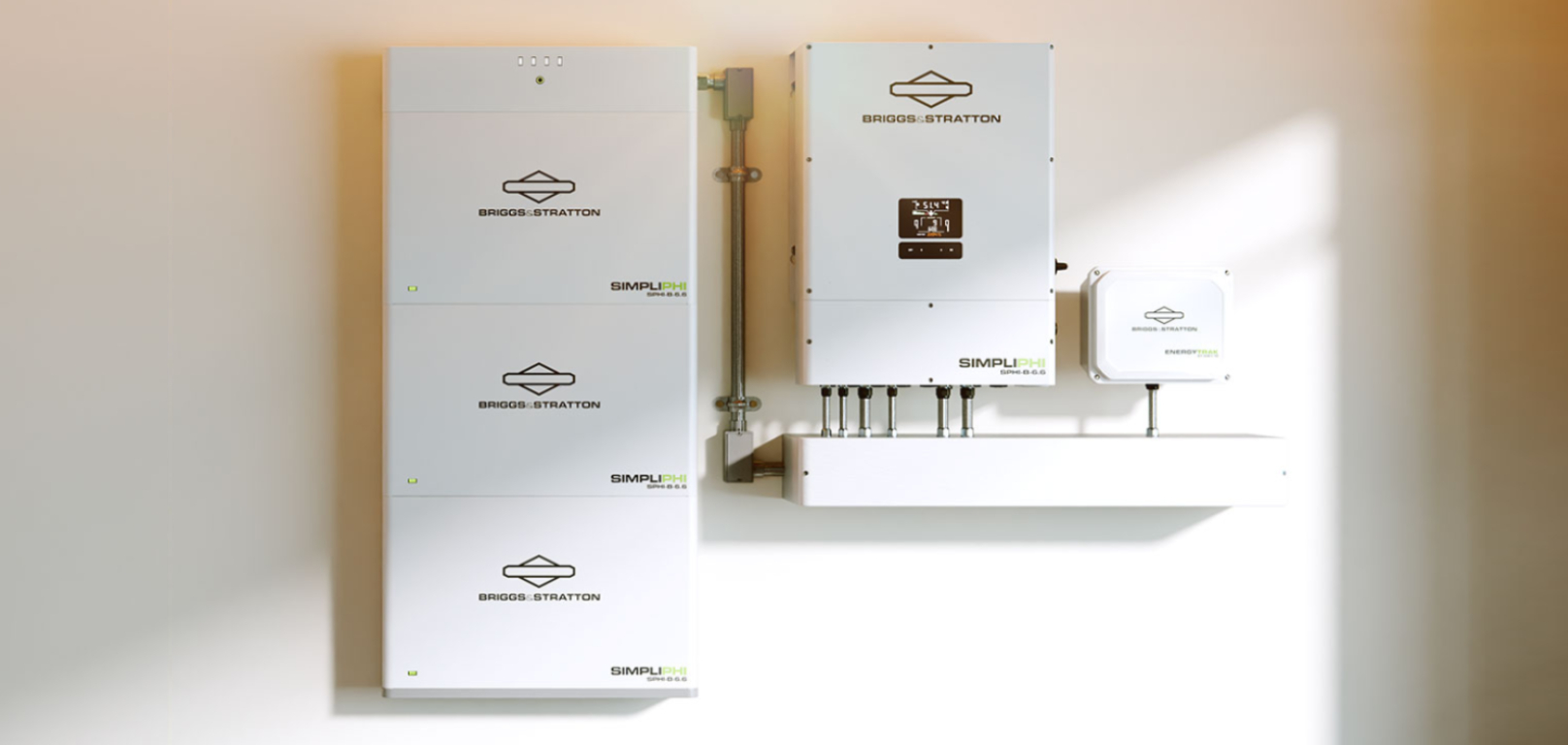Updated 3 months ago
Should you buy a Briggs & Stratton Energy Storage System for your home?
Written by Ben Zientara Ben ZientaraBen Zientara is a writer, researcher, and solar policy analyst who has written about the residential solar industry, the electric grid, and state util...Learn more

Why you can trust SolarReviews
SolarReviews is the leading American website for solar panel reviews and solar panel installation companies. Our industry experts have a combined three decades of solar experience and maintain editorial independence for their reviews. No company can pay to alter the reviews or review scores shown on our site. Learn more about SolarReviews and how we make money.
Briggs & Stratton, a company that is well known for its engines and backup generators, is now offering battery-based energy storage solutions. In 2021, the company acquired SimpliPhi Power, which had a long history of successfully providing energy storage solutions to the off-grid and DIY communities.
The company’s latest product is the SimpliPhi Energy Storage System (ESS), which includes a hybrid solar inverter and energy monitoring system alongside the new, stackable SimpliPhi 6.6 modular battery system.
The company’s energy storage products are designed to provide daily cycling for solar self-consumption as well as backup power for emergencies. The SimpliPhi ESS can operate in off-grid and grid-tied settings and offers excellent performance, safe and non-toxic materials, and a 10-year warranty to protect your investment.
If you’re looking for a home energy storage solution, SimpliPhi should be on your shortlist.
Key takeaways
Briggs & Stratton is a company with a long history of innovation and a commitment to quality that acquired SimpliPhi Power in 2021.
The company offers several energy storage solutions, from smaller 3.8-kWh batteries with built-in battery management systems (BMS) to high-voltage commercial and industrial storage systems.
The most interesting Briggs & Stratton product for homeowners is the new Energy Storage System (ESS), a modular battery storage system that can provide backup power and cycle daily from any source of electricity, including solar panels, generators, or the grid.
The SimpliPhi ESS competes with solar batteries from well-known manufacturers like Generac, LG, and Tesla and rises above the industry standard for longevity and reliability, but at a somewhat higher cost.
History
The company that would become SimpliPhi got its start in 2001 when founder Stuart Lennox decided to repurpose lithium-ion battery packs used in early e-bikes to make mobile battery packs for the film and television industry. These early products became the industry standard for portable battery packs, and the company looked for ways to expand, using lithium ferro phosphate (LFP) batteries to create new products for the home and commercial markets.
By 2021, SimpliPhi had a product line of LFP batteries known for their longevity and performance. The brand was acquired in September of that year by generator company Briggs & Stratton, which itself was recently acquired and re-invigorated by private equity firm KPS Capital Partners.
Steve Andrews—Briggs’ CEO at the time—saw SimpliPhi as a perfect fit for his company’s new focus on being “power application experts.” Andrews said Briggs would no longer rely solely on the internal combustion engines used in its generators, instead providing solutions for power in all settings, however it makes sense.
A little less than a year later, the company announced SimpliPhi ESS, which is now available for purchase across the United States from both stores and partner installers.
SimpliPhi ESS
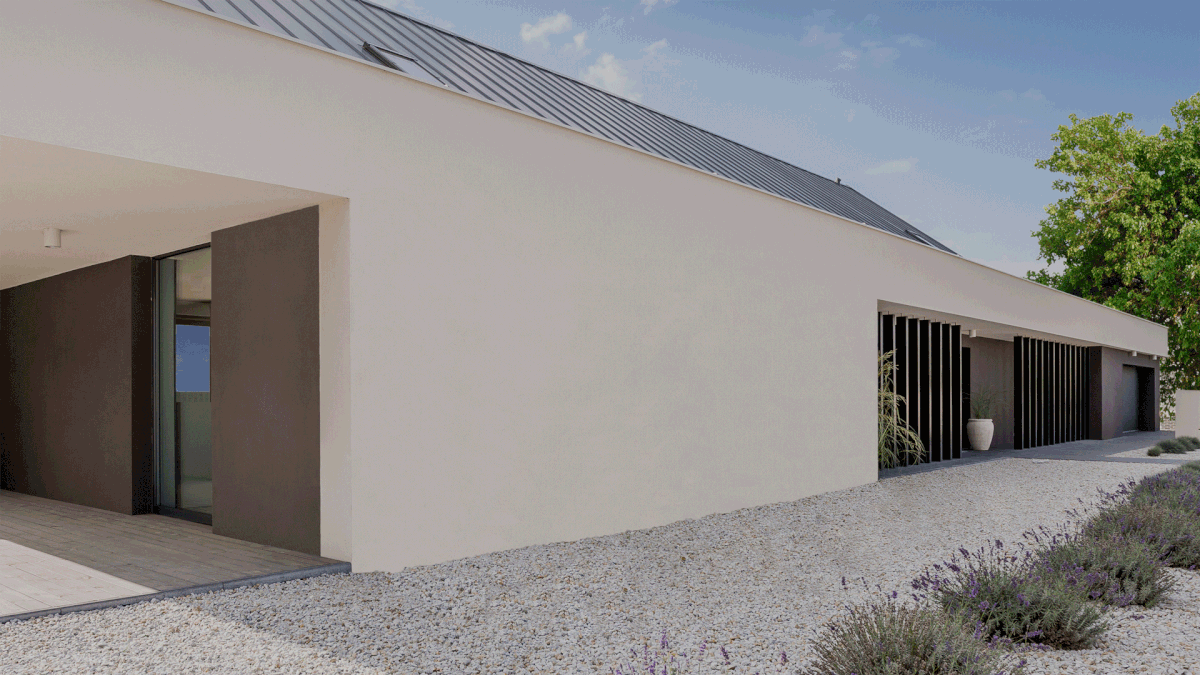
An image showing how the ESS can be scaled in capacity and power output. Image courtesy of SimpliPhi.
The SimpliPhi Energy Storage System (ESS) is a new customizable battery storage solution. Like many energy storage systems on the market today, SimpliPhi ESS is a modular solution, meaning it has core components (batteries, inverters, and control systems) that can be put together in several different configurations, from small-scale home battery backup to energy storage systems for very large buildings.
When all the components are used together, the SimpliPhi ESS provides a smart, connected, and convenient solution for homeowners to monitor and manage their solar and battery storage systems.
SimpliPhi ESS cost
As described above, the SimpliPhi ESS can scale up from a very small home system to a very large commercial solution, so it’s not possible to assign a single price. We can say that the average homeowner would likely be happy with a 13.3 kWh system consisting of one inverter and two battery modules, which would cost around $9,300 before installation and battery incentives.
Here is a look at prices for some of the most common ESS capacities:
Storage capacity | Components | Best for | Retail cost |
6.65 kWh | 1 inverter, 1 battery | Small home backup / critical loads only | $6,600 |
13.3 kWh | 1 inverter 2 batteries | Average home backup / daily cycling | $9,300 |
39.9 kWh | 2 inverters, 6 batteries | Very large home backup | $23,250 |
We listed retail prices in the table above, but the SimpliPhi ESS is also sold by qualified installers who can take advantage of bulk buying through distributors. The relative cost can also be reduced if you plan to add the SimpliPhi ESS to a new solar panel installation because the SimpliPhi inverter can take the place of a different solar inverter.
Look below for how these costs compare to Briggs & Stratton’s competitors in the energy storage market.
Components of a SimpliPhi ESS system
There are four main components of the Briggs & Stratton ESS ecosystem: a 6.6 kilowatt-hour (kWh) battery module, a battery controller, a 6 kilowatt (kW) hybrid inverter, and the EnergyTrak control system. If you want more instantaneous power, the Briggs & Stratton inverter can be replaced with one from Sol-Ark.
Together, these components accept input from solar panels, the grid, and backup generators; store energy in the batteries for later use, and customize how that energy is used.
SimpliPhi 6.6 battery module and controller
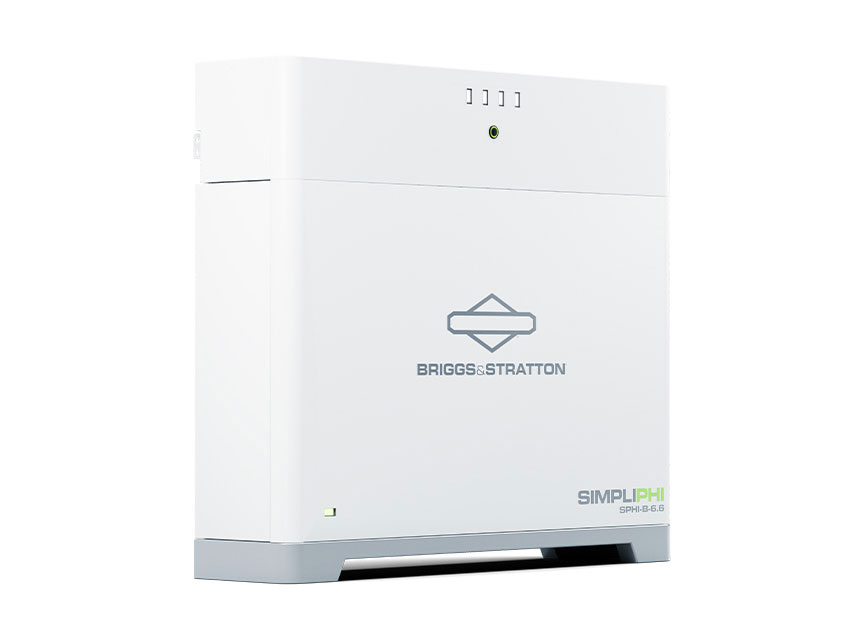
Pictured: a single SimpliPhi 6.6 battery module with a floor mount base and a battery controller
The new, stackable SimpliPhi 6.6 battery and controller modules are the stars of the Briggs & Stratton ESS.
Each battery module can hold 6.65 kWh in an outdoor-rated container, and three battery modules can fit under a single battery controller for 19.95 kWh of storage. Up to six of these stacks can sit side by side for a huge system of up to 119.7 kWh.
The key benefits of these battery modules include their super safe and long-lived LFP battery cells and the ability to stack the batteries without any wiring or hardware configuration—each module just clicks into place atop another using Briggs & Stratton’s proprietary RapidStak connectors.
SimpliPhi 6 kW inverter
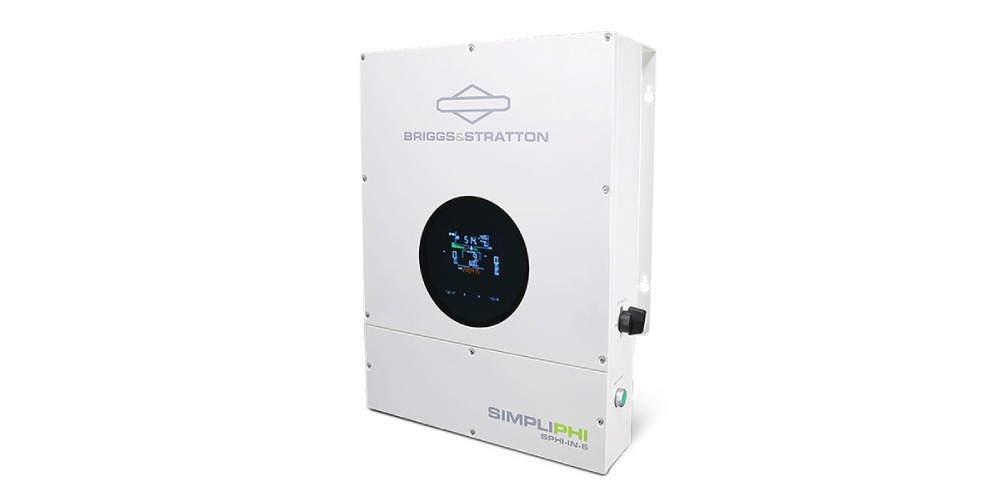
The SimpliPhi 6 kW inverter is a fairly standard hybrid inverter that can accept up to 7.5 kW of solar input and charge batteries at up to 100 amps and 62 volts (6.2 kW). The inverter can be paired with any battery with a battery management system (BMS) that uses the CANBUS communications protocol, but Briggs & Stratton says it is specifically designed to work with the 6.6 kWh ESS batteries, as well as the company’s 4.9-kWh ESS batteries, PHI 3.8, and AmpliPhi 3.8 batteries.
Like any other inverter, the SimpliPhi unit can work without batteries in a grid-connected setup. When paired with batteries, the inverter has several storage modes that allow its owner to specify how the energy stored in the battery will be used.
SimpliPhi ESS storage modes
- Uninterruptible power supply (UPS) with 8 ms switch over time
- Solar self-consumption (i.e. daily cycling)
- Time-of-use (TOU), which reserves stored energy for when grid power is most expensive
- Off-grid backup
In a power outage, the inverter can output 6 kW continuously and surge up to 9 kW for 5 seconds (and even 12 kW for 100 milliseconds) to start motors in appliances like air conditioners and well pumps. If more power is needed, adding more inverters increases the potential output of the system by those numbers.
Another important feature of the SimpliPhi inverter is automatic generator start. If the inverter detects batteries dropping below a specified set-point when the grid is down, it can automatically start any backup generator that has a 2-wire start in order to charge the batteries.
When the batteries have charged to a specified level, the inverter shuts the generator off until it is needed. With this functionality, it is possible to run the SimpliPhi ESS in off-grid mode using solar panels and a backup generator indefinitely.
EnergyTrak control system
The SimpliPhi inverter and batteries work together to use and store electricity, but EnergyTrak is the brains that make the SimpliPhi ESS work. EnergyTrak is a hardware and software solution that professional installers use to commission, monitor, and maintain their customers’ ESS installations. Homeowners use the EnergyTrak app to manage and control their systems remotely.
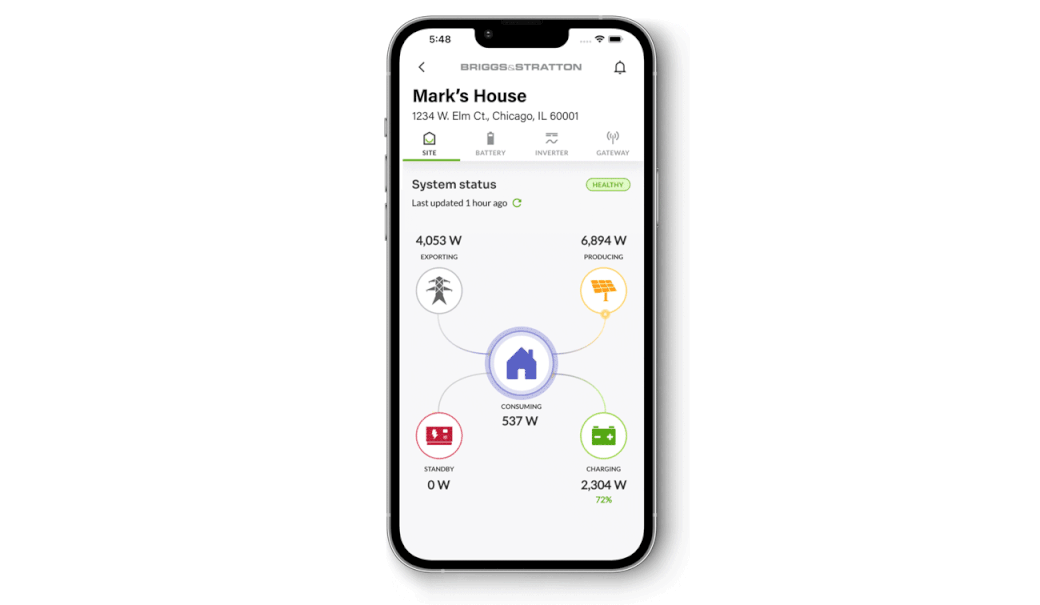
EnergyTrak shows how power is being generated, used and stored within the home. Image source: Briggs & Stratton
The EnergyTrak mobile app (available on Google Play and Apple’s App Store) lets homeowners see solar generation, battery storage level, and power consumption in real time. It also lets users switch between the different storage modes listed above. This can be a very handy feature: in the case of a coming storm, you might want to switch from TOU or self-consumption mode to UPS mode to maintain extra battery capacity in case of a power outage.
How the SimpliPhi ESS compares to other home batteries
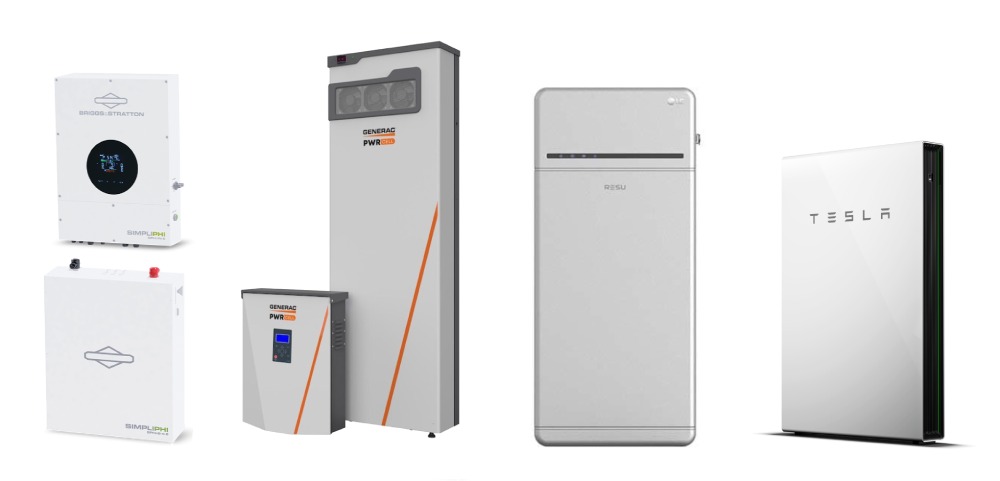
SimpliPhi ESS and some of its major competitors from Generac, LG, and Tesla.
When we compare batteries to each other, we look at a few factors:
Functionality
Quality and longevity
Warranty protection
Cost
In this case, we’ll be judging the Briggs & Stratton SimpliPhi ESS against the top batteries in the industry, from Generac, LG, and Tesla.
Functionality
When it comes to functionality, the SimpliPhi ESS meets or exceeds industry standards. It offers excellent efficiency, retrofit and new installation capabilities, control over battery discharge modes, and generator auto start.
The one area where Briggs & Stratton currently lacks is participation in battery incentive programs like demand response and virtual power plants. Thankfully this problem can be solved with software updates, and the company is working on inking deals to get their batteries added to programs around the country.
Quality and longevity
When it comes to quality, few people in the solar industry would argue that there’s a higher-quality LFP battery than Briggs & Stratton’s SimpliPhi. The company’s products are proven performers around the globe, including being used by the Department of Defense in support of U.S. troops in Afghanistan.
In addition, LFP battery technology is already significantly preferable to lithium NMC batteries used in Generac, LG, and Tesla batteries. NMC batteries use toxic metals mined in conflict-ridden areas and often need external cooling systems to lower their risk of thermal runaway (which can cause a fire). LFP batteries suffer from none of those problems.
Warranty protection
This is where we feel Briggs & Stratton has done the most to differentiate itself from the rest of the industry. The company's equipment warranties compare very favorably to the competition.
Specifically, the warranty for the new SimpliPhi 6.6 battery covers the materials and workmanship of the battery for 10 years, and says that it will end that period of time with no less that 5 kWh of capacity (75% of its original capacity).
In addition, the company says the battery can be used to serve 37.6 megawatt-hours (MWh) of energy during the warranty period even if the battery is fully discharged every time. That measurement is known as "total energy throughput" and at roughly 5.7 MWh per kWh of storage capacity, it is significantly higher than any other company. The industry average throughput warranty is about 3 MWh per kWh.
Briggs & Stratton's other batteries each come with their own warranty coverage for materials and workmanship, energy capacity retention, and total energy throughput. Read the company's warranty document here.
Cost comparison
Given their reputation for functionality, quality, and longevity, you might expect the SimpliPhi ESS to be more expensive than the competition. But, it generally falls in line with other batteries:
Battery | Capacity | Cost |
|---|---|---|
SimpliPhi ESS | 13.3 kWh | $9,300 |
Generac PWRcell M5 | 15 kWh | $15,000 |
LG Chem RESU 16H Prime | 16 kWh | $9,500* |
Tesla Powerwall | 13.5 kWh | $9,200 |
* The LG Chem RESU battery does not include an inverter, which can add $1,500 to $3,500 to the cost.
The SimpliPhi ESS is about the same price as a Tesla Powerwall, which is often hailed as one of the most cost-effective battery solutions.
Of course, you may not pay the retail price for your SimpliPhi ESS. If you find an installer that can get it wholesale, they will offer a total installed price that includes all the work to connect and commission the system and keep it running for many years to come.
Other SimpliPhi batteries
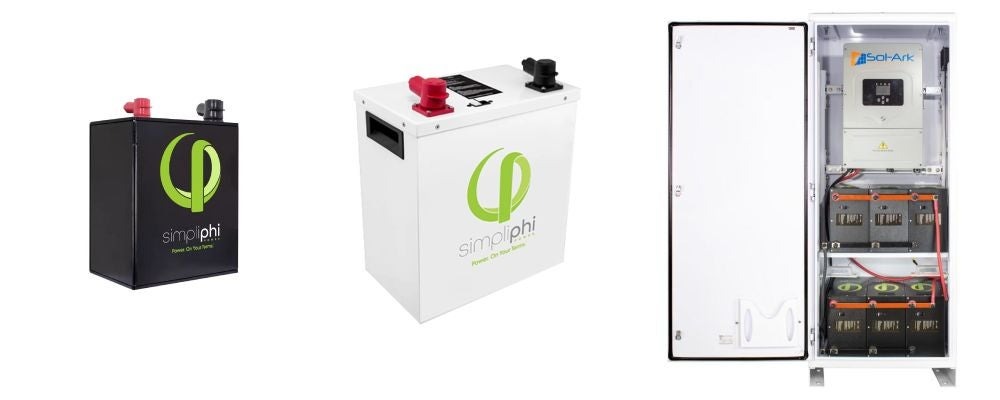
Other SimpliPhi batteries (L-R: PHI 1.4, PHI 3.8-M, AccESS Sol-Ark).
In addition to its new ESS lineup, Briggs & Stratton offers many other products that use the same LFP battery technology. The PHI and AmpliPhi lines of batteries offer solutions in 12-, 24-, and 48-volt flavors. Its fully-integrated systems combine these batteries with Sol-Ark or Schneider inverters in custom enclosures, with several capacity sizes available.
SimpliPhi 4.9 kWh battery
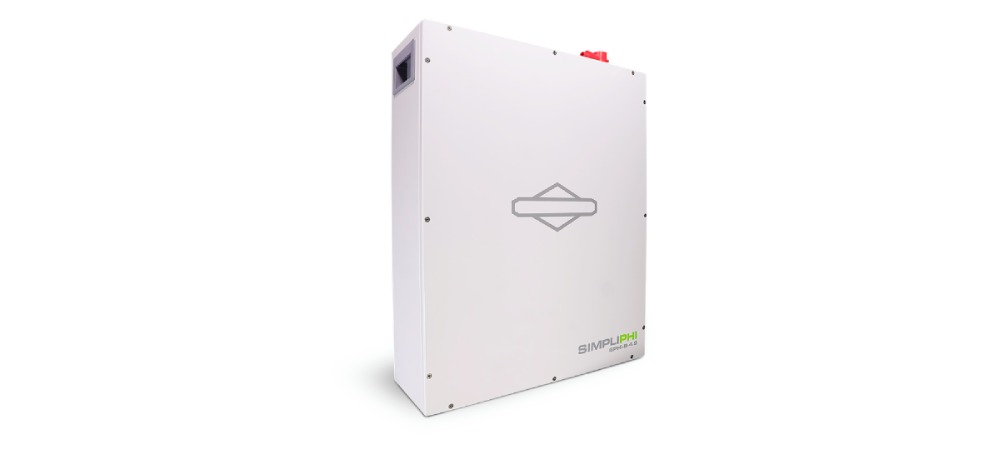
The SimpliPhi ESS battery module comes in one size that can hold up to 4.9 kWh of electricity. Up to four batteries can be wired in parallel and connected to a single SimpliPhi ESS inverter, and up to nine inverters can be wired together. A maximum of 72 batteries can be wired together in this way, holding 352.8 kWh of electricity.
These 48-volt batteries are made with high-quality LFP cells that SimpliPhi claims can withstand up to 10,000 charge/discharge cycles. That is a very long cycle life—an average of around 2.7 cycles per day for the 10-year warranty period.
Battery specifications | |
|---|---|
Rated kWh DC Capacity | 4.9 kWh DC* |
Max. Surge Discharge Rate (10 minutes) | 100 amps DC (5.1 kW DC) |
Max. Continuous Charge/Discharge Rate | 48.5 amps DC (2.48 kW DC) |
Depth of Discharge (DoD) | up to 100% |
Cycle life | 10,000+ cycles (@ 80% DOD) |
Charging temperature | 32° to 120° F (0° to 49° C) |
Mounting | Wall-mount only |
Dimensions | 23 x 28.5 x 8.5 in (30 in H w/terminals) |
Weight | 160 lb (73 kg) |
*Maximum capacity is 4.9 kWh, but SimpliPhi recommends 80% DoD, which is 3.9 kWh.
As shown in the table above, SimpliPhi estimates the 10,000 cycle lifespan at 80% depth of discharge, meaning each charge/discharge cycle would only be 3.9 kWh of electricity, leaving 1 kWh in the battery to prevent degradation.
It’s important to note that SimpliPhi makes no claim of cycle life or total battery throughput (measured in megawatt-hours) in its ESS Warranty. Instead, the warranty covers “manufacturing defect(s) in materials and workmanship” for 10 years. That’s a bit of a red flag because it doesn’t explicitly protect the system owner if the capacity of the batteries decreases more rapidly than expected. We like warranties to be explicit about how they protect the system owner.
To be clear, SimpliPhi products have proven to be robust and long-lasting in the field for many years—we are simply pointing out where the company’s warranty doesn’t measure up to industry standards. Brands like Generac and Tesla provide throughput warranties for their batteries that guarantee they will retain a certain capacity as the batteries are used over a large number of cycles.
PHI and AmpliPHI batteries
The PHI and AmpliPHI product lines are standalone batteries made to work with some of the leading inverters and charge controllers on the market. Like the ESS, these batteries come with 10-year warranties and the same 10,000 cycle-life claims (again at 80% DOD).
Briggs & Stratton says all its PHI batteries are “compatible with all industry-standard charge controllers,” while the AmpliPHI line is compatible only with Sol-Ark, SMA, and Schneider inverters. The company provides Integration guides for many brands on its product documentation page.
Here are some details about each of the three current batteries offered in these product lines:
| PHI 1.4 | PHI 3.8-M | AmpliPHI 3.8 |
|---|---|---|---|
Capacity | 1.4 kWh | 3.8 kWh | 3.8 kWh |
DC Voltage | 12 or 24 | 24 or 48 | 48 |
Dimensions (L x W x H) | 11.25 x 9.25 x 7.25 in | 13.5 x 14 x 8 in | 13.5 x 14 x 8 in |
Weight (lbs) | 33 | 86 | 86 |
Notes | Max output 0.69 or 0.73 kW DC based on battery voltage | Max output 1.9 or 1.92 kW DC based on battery voltage | Advanced BMS to prevent overcurrent events |
Integrated systems
If building a system using standalone batteries, inverters, and home storage system doesn’t sound like fun to you, you can also purchase one of SimpliPhi’s Integrated Systems, which come pre-programmed and include an inverter (either Sol-Ark or Schneider) and either PHI or AmpliPHI batteries in a custom enclosure.
An integrated system from SimpliPhi is almost like a “just add solar” solution, and the ExprESS PHI system is even on wheels and can be moved from place to place as a portable power solution.
SimpliPhi offers two current integrated systems. Here’s a little about each of them:
AccESS PHI Sol-Ark | AccESS AmpliPHI Sol-Ark | |
|---|---|---|
Capacities offered | 15.2, 19, or 22.8 kWh | 19 kWh |
Built-in inverter | Sol-Ark 12K | Sol-Ark 12K |
Continuous output power | 12 kW combined, 9 kW in off-grid mode | 12 kW combined, 9 kW in off-grid mode |
Dimensions (H x W x D) | 29.5 x 76 x 20 in | 29.5 x 76 x 20 in |
Weight (lbs) | 944, 1,030, or 1,116, depending on capacity | 1,030 |
Mounting | Free-standing or Pad-mounted | Free-standing or Pad-mounted |
Where to buy
Briggs & Stratton sells its products through wholesale and retail distributors on five continents. In the USA, it’s easy for end users to buy SimpliPhi batteries for the retail prices listed above, but professionals who have accounts at wholesale distributors will offer different prices based on their costs and added charges for installation and commissioning.
The best way to get Briggs & Stratton SimpliPhi batteries is to find an installer.
If you don’t have a ton of experience dealing with voltages that can kill you, we recommend finding a licensed professional installer who carries Briggs & Stratton products. You can do that via our website by using the solar calculator to get solar quotes from installers in your area.
You’ll benefit from having the job done by a professional and letting them be responsible for making sure your battery bank is working properly on day 1 and day 3,650. Choose a good installer by getting multiple quotes and asking the right questions.
Bottom line: is a Briggs & Stratton battery right for you?
When it comes to long-lasting, high-quality batteries, Briggs & Stratton is hard to beat. They have a well-earned reputation for longevity and reliability, but we wish they’d back that up a little more explicitly in their warranty language. Still, 10 years of protection against defects of product and workmanship is a good start.
SimpliPhi batteries will cost a little more than other offerings on the market, but their functionality is right up there with the best, and their total lifespan should make the extra cost worth it. Additionally, the ESS should soon be able to join battery incentive programs like demand response and virtual power plants if you’re lucky enough to live in one of the areas offering them.
If you’re the kind of person who wants the best of everything with price as no object, we recommend Briggs & Stratton SimpliPhi batteries.
Ben Zientara is a writer, researcher, and solar policy analyst who has written about the residential solar industry, the electric grid, and state utility policy since 2013. His early work included leading the team that produced the annual State Solar Power Rankings Report for the Solar Power Rocks website from 2015 to 2020. The rankings were utilized and referenced by a diverse mix of policymakers, advocacy groups, and media including The Center...
Learn more about Ben Zientara